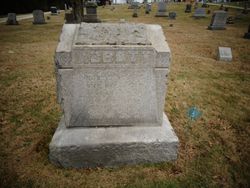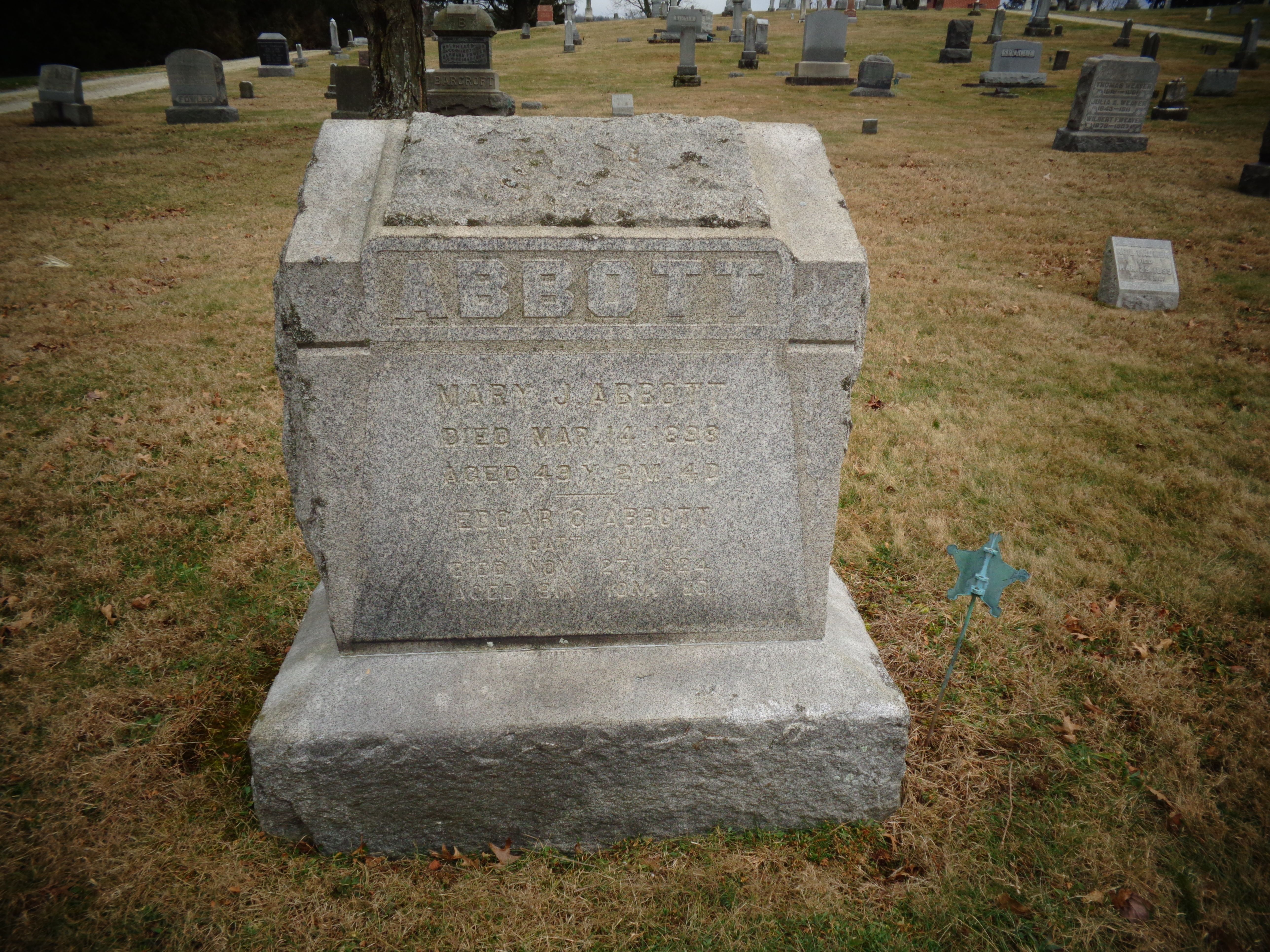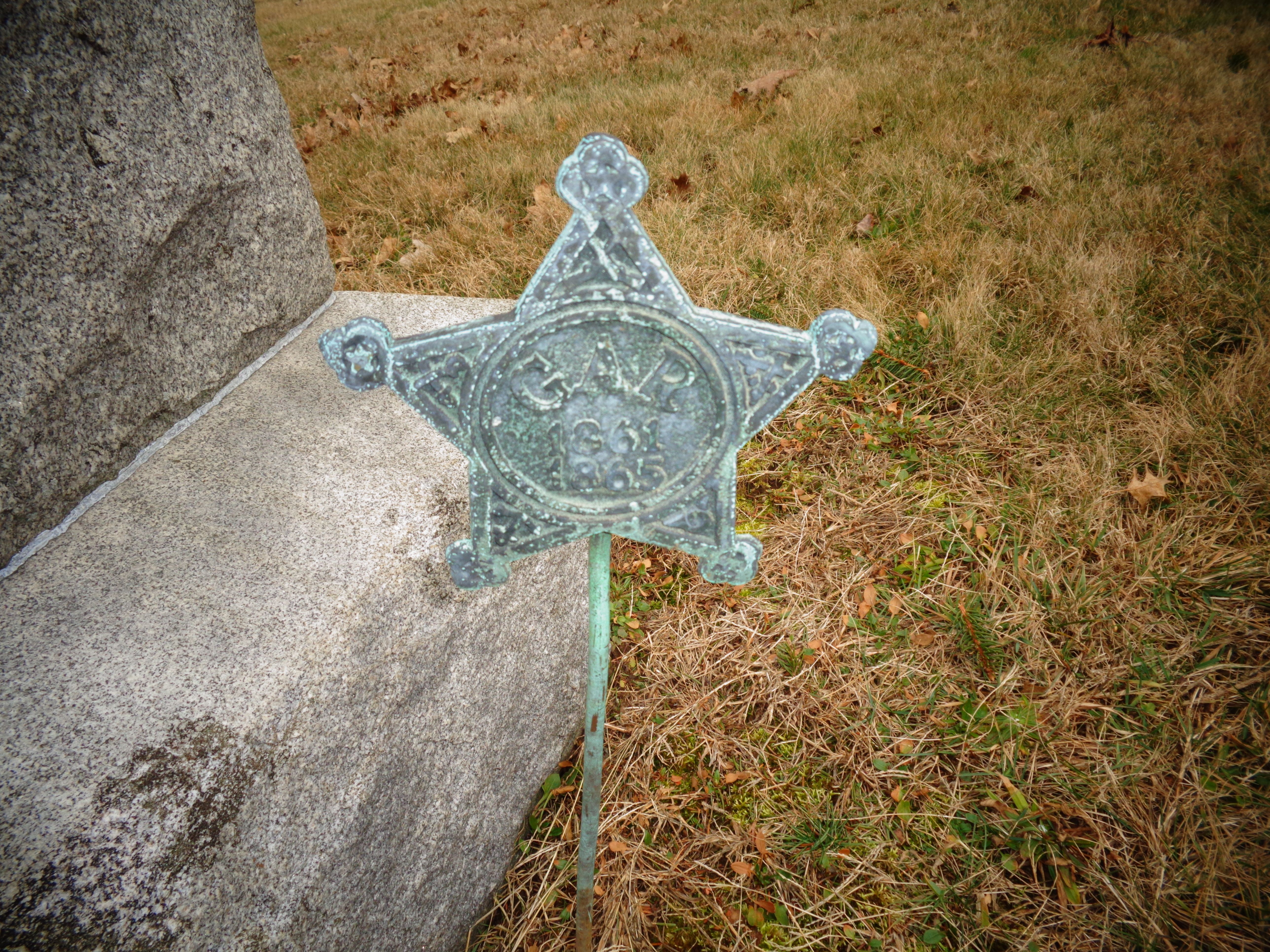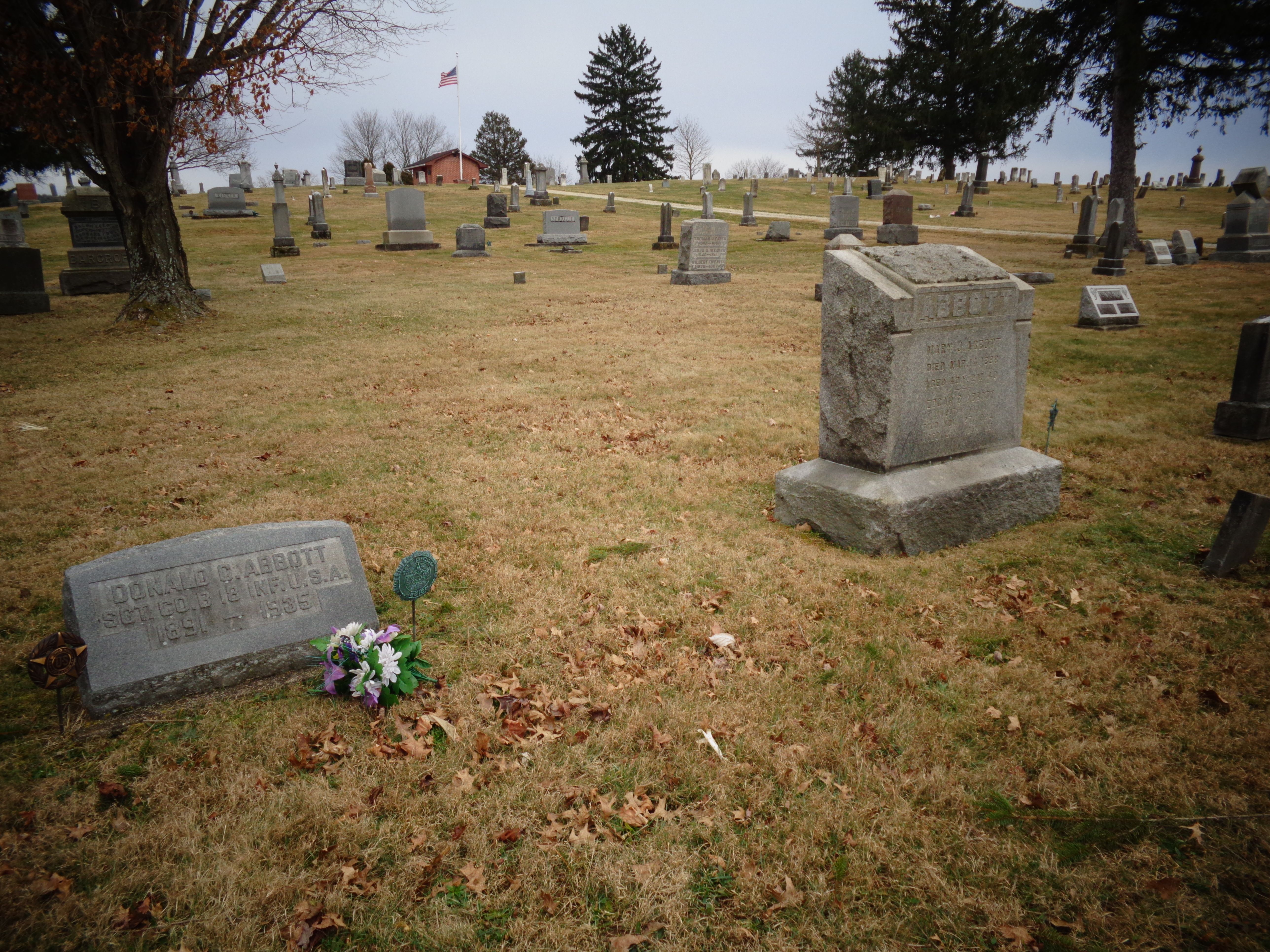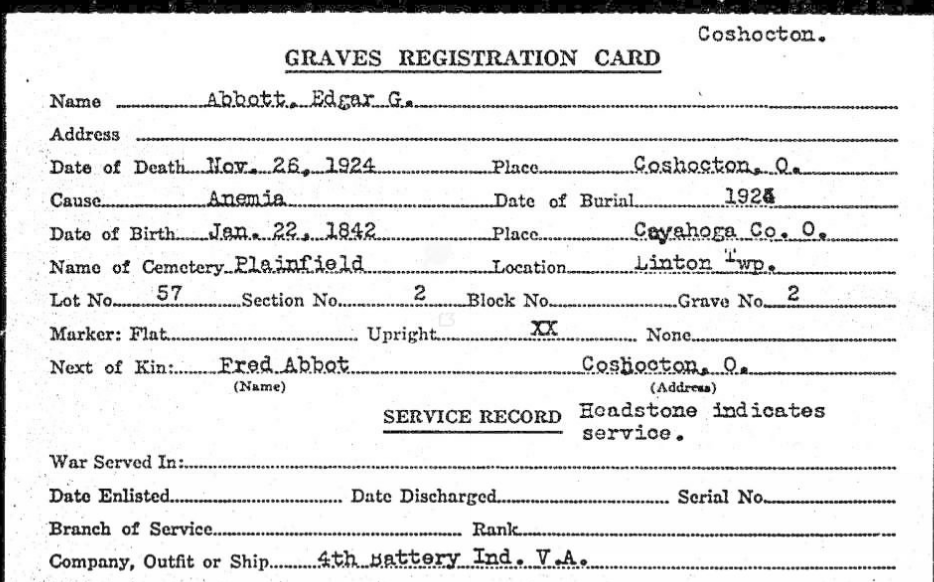Parents:
Jason ABBOTT
Valeria Adeline ARMSTRONG
Edgar Gillespie Abbott married Mary Jane "Jennie" McClain on March 29, 1867 by Rev. Israel Thrap in Coshocton County, Ohio.
_________________________________________________
"Case 408.— Corporal E. G. Abbott, 4th Indiana Battery, aged 21 years, was wounded at Stone River, December 31, 1862. He remained at a field hospital of the Fourteenth Corps for nine days, when he was conveyed to Murfreesboro. Two months later he was transferred to hospital at Nashville, and subsequently to Louisville, at all of which places his injury was recorded as a "shot wound of left thigh." On April 11, 1863, the patient was discharged from Camp Chase, Acting Assistant Surgeon J. S. Bailey certifying to "Shot fracture of left, femur, resulting in nearly two inches shortening." In January, 1871, Dr. A. L. Lowell, Special Examiner of the Pension Office, who saw the man several years previously, furnished the following description of the injury and its result, which he obtained partly from his own observations and partly from a personal communication of Examiner L. T. Ballou, of Newark, Ohio : "A conoidal ball struck the left thigh anteriorly, about four inches below the great trochanter, and, fracturing the femur, passed backward and made its exit about one inch below the gluteal fold. He states that neither splints nor extension were ever applied to the limb. About September 1, 1863, the external wound had healed, but there was still some tenderness about the seat of the fracture, and as he further improved and began to use the limb with less care, he observed that it would rotate. At present he is able to shorten the distance between the knee and trochanter six inches by a sudden swinging and extending motion of the limb, which appears to throw the lower fragment to one side and is followed by voluntary contraction of the muscles. While in this position he is able to support his weight (140 pounds) on the limb, and he can then extend the same again to its former position by a little shaking, or, as he describes it, by a 'wiggle,' the thigh in either attitude being firm and inflexible. He can evert the left foot so as to place its heel to the toes of the right foot, thus placing the outer margin of the left foot In apposition with the inner margin of its fellow. These malpositions are completed without eversion of the trochanter. The lower part of the shaft of the femur appears to slide up on the anterior and internal surface of the upper fragment. The upper and middle thirds of the injured thigh exceed the corresponding portions of its fellow one inch in circumference. This increased size is doubtless due to a large ensheathing callus which surrounds the lower portion of the upper third of the femur, and which is distinctly perceptible by digital compression. Sometimes, though only with great care, the man is able to walk well, his gait showing only a slight irregularity of step. The limb is often painful, and frequently he is obliged to suspend his occupation as a laborer. During the winter of 1869 he could not walk without pain, and was unable to put on his boot." Subsequent examiners report no changes in the condition of the limb. The pensioner was paid June 4, 1877." -- The Medical and Surgical History of the War of the Rebellion. Part III, Volume II. (3rd Surgical volume) by U. S. Army Surgeon General's Office, 1883.
Contributor: Celeste #46927489
Parents:
Jason ABBOTT
Valeria Adeline ARMSTRONG
Edgar Gillespie Abbott married Mary Jane "Jennie" McClain on March 29, 1867 by Rev. Israel Thrap in Coshocton County, Ohio.
_________________________________________________
"Case 408.— Corporal E. G. Abbott, 4th Indiana Battery, aged 21 years, was wounded at Stone River, December 31, 1862. He remained at a field hospital of the Fourteenth Corps for nine days, when he was conveyed to Murfreesboro. Two months later he was transferred to hospital at Nashville, and subsequently to Louisville, at all of which places his injury was recorded as a "shot wound of left thigh." On April 11, 1863, the patient was discharged from Camp Chase, Acting Assistant Surgeon J. S. Bailey certifying to "Shot fracture of left, femur, resulting in nearly two inches shortening." In January, 1871, Dr. A. L. Lowell, Special Examiner of the Pension Office, who saw the man several years previously, furnished the following description of the injury and its result, which he obtained partly from his own observations and partly from a personal communication of Examiner L. T. Ballou, of Newark, Ohio : "A conoidal ball struck the left thigh anteriorly, about four inches below the great trochanter, and, fracturing the femur, passed backward and made its exit about one inch below the gluteal fold. He states that neither splints nor extension were ever applied to the limb. About September 1, 1863, the external wound had healed, but there was still some tenderness about the seat of the fracture, and as he further improved and began to use the limb with less care, he observed that it would rotate. At present he is able to shorten the distance between the knee and trochanter six inches by a sudden swinging and extending motion of the limb, which appears to throw the lower fragment to one side and is followed by voluntary contraction of the muscles. While in this position he is able to support his weight (140 pounds) on the limb, and he can then extend the same again to its former position by a little shaking, or, as he describes it, by a 'wiggle,' the thigh in either attitude being firm and inflexible. He can evert the left foot so as to place its heel to the toes of the right foot, thus placing the outer margin of the left foot In apposition with the inner margin of its fellow. These malpositions are completed without eversion of the trochanter. The lower part of the shaft of the femur appears to slide up on the anterior and internal surface of the upper fragment. The upper and middle thirds of the injured thigh exceed the corresponding portions of its fellow one inch in circumference. This increased size is doubtless due to a large ensheathing callus which surrounds the lower portion of the upper third of the femur, and which is distinctly perceptible by digital compression. Sometimes, though only with great care, the man is able to walk well, his gait showing only a slight irregularity of step. The limb is often painful, and frequently he is obliged to suspend his occupation as a laborer. During the winter of 1869 he could not walk without pain, and was unable to put on his boot." Subsequent examiners report no changes in the condition of the limb. The pensioner was paid June 4, 1877." -- The Medical and Surgical History of the War of the Rebellion. Part III, Volume II. (3rd Surgical volume) by U. S. Army Surgeon General's Office, 1883.
Contributor: Celeste #46927489
Family Members
Sponsored by Ancestry
Advertisement
Advertisement
